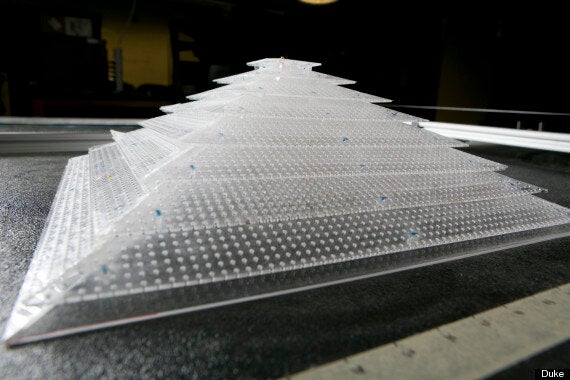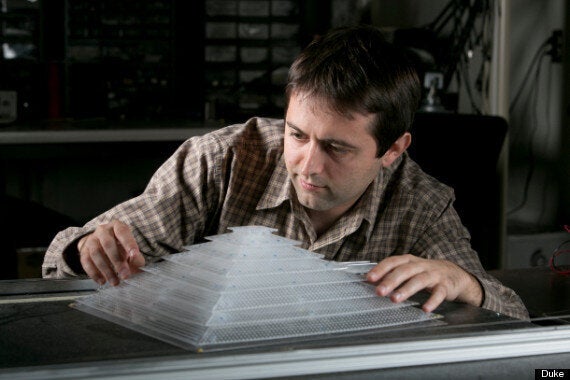Some rather clever engineers have created the world's first 3d-cloaking device.
The pyramid-esque structure reroutes sound waves creating the impression that an object beneath is simply not there.
Even more impressively, the cloak works in three dimensions meaning it doesn't matter which direction sound waves are fired at it.

Reminiscent of a Mayan temple
Steven Cummer, professor of electrical and computer engineering at Duke University where the device was created, said: "The particular trick we’re performing is hiding an object from sound waves.
"By placing this cloak around an object, the sound waves behave like there is nothing more than a flat surface in their path."
To achieve this new trick, Cummer and his colleagues turned to the developing field of metamaterials—the combination of natural materials in repeating patterns to achieve unnatural properties.
In the case of the new acoustic cloak, the materials manipulating the behaviour of sound waves are simply plastic and air.
Once constructed, the device looks like several plastic plates with a repeating pattern of holes poked through them stacked on top of one another to form a sort of pyramid.
Cummer assures us that relatively simple looking design actually too some incredibly intense calculations to configure.

Bogdan Popa, a graduate student in electrical and computer engineering, shows off the 3D acoustic cloak he helped design
To give the illusion that it isn’t there, the cloak must alter the waves’ trajectory to match what they would look like had they had reflected off a flat surface.
Because the sound is not reaching the surface beneath, it is traveling a shorter distance and its speed must be slowed to compensate.
As for potential applications, the immediate one that springs to mind is sonar cloaking for submarines but there are more everyday uses.
Cummer said: "We conducted our tests in the air, but sound waves behave similarly underwater, so one obvious potential use is sonar avoidance.
"But there’s also the design of auditoriums or concert halls—any space where you need to control the acoustics.
"If you had to put a beam somewhere for structural reasons that was going to mess up the sound, perhaps you could fix the acoustics by cloaking it."